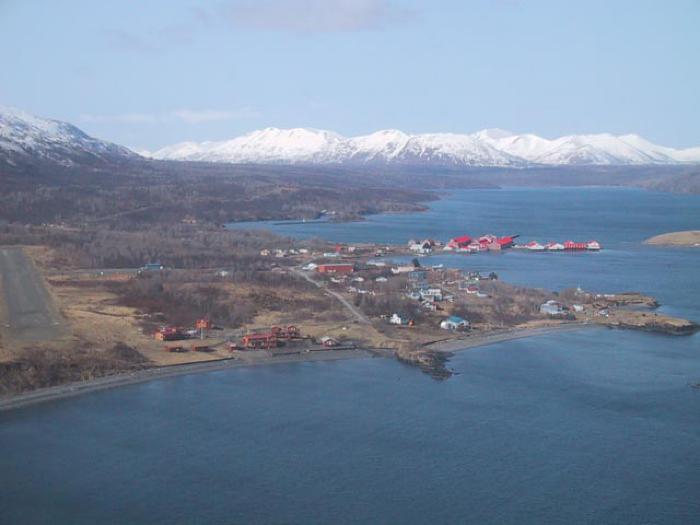Larsen Bay — Uyaqsaq

Tucked against the shore of Uyak Bay, sixty-two miles from Kodiak, the village of Larsen Bay is a cluster of houses, large metal-roofed cannery buildings, sturdy wooden docks, and boardwalks. Today, the community is home to about eighty-nine people. Named for Unga Island entrepreneur Peter Larsen, the modern community began to develop in 1888 when the Arctic Packing Company constructed a cannery on the western shore of Larsen Bay, opposite the present location of the village. Here a seasonal community processed salmon from southern Kodiak Island.
In 1911, the Alaska Packers Association built a large modern cannery next to the future site of Larsen Bay village. By about 1930, families living in the Uayk Bay region began to settle beside the cannery and were joined gradually by residents from nearby Karluk and Uganik. This created the modern village. The cannery, which continues to operate seasonally under changed ownership, provides employment for community members. Many Alutiiq families also lead guided hunting and fishing excursions around scenic Uyak Bay.
Despite its association with the canning industry, Uyaqsaq was once home to many ancient Alutiiq families. A portion of the village rests atop the Uyak site, a massive prehistoric midden that holds houses, tools, and burials. This site is one of the best-known in Alaska due to its research history. In the 1930s, Aleš Hrdlička, a physical anthropologist from the Smithsonian Institution, led investigations here. In his quest for human remains, he paid little attention to archaeological or ethical details, destroying valuable information and removing hundred of ancestral remains. In 1991, Larsen Bay residents argued successfully for the return of these remains. One of the first repatriations in the United States, their efforts set a precedent for the return of Native American skeletons and reverential treatment of Native American graves.
